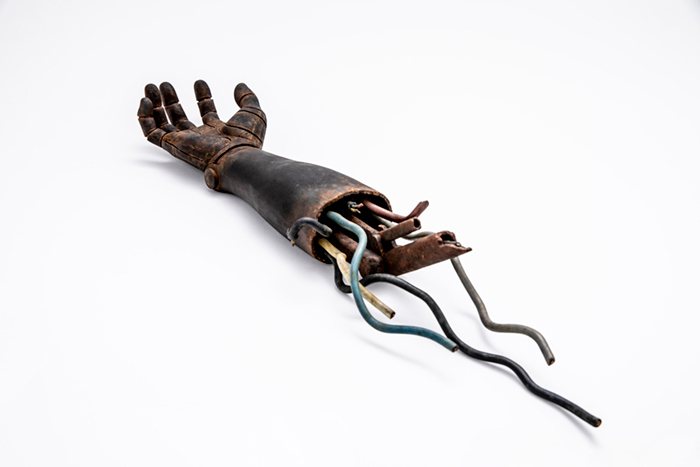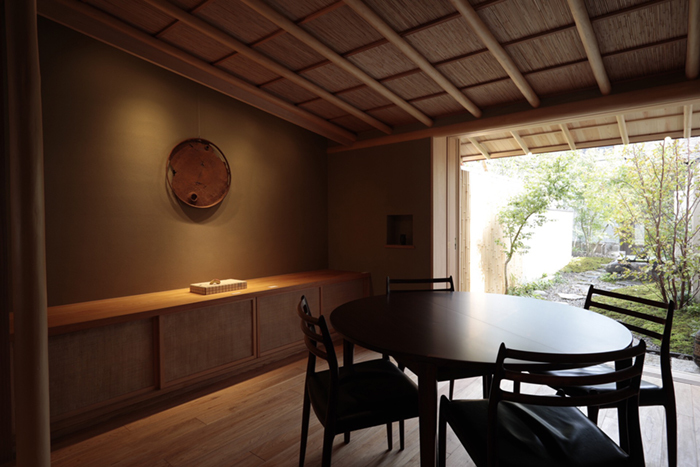Note: This website was automatically translated, so some terms or nuances may not be completely accurate.
Business opportunities lie in extraordinary craftsmanship!
Kane-e, an antique dealer located directly in front of the main gate of Kyoto's Daitoku-in Temple.
The items they handle span diverse fields, primarily focusing on period folding screens and modern art crafts,
extending even to contemporary art.
Mr. Hideo Kane-e states that their approach to selecting items, based on "the quality and appeal of the work,"
has consistently adhered to this principle.

Regarding the quality or value of objects,
I personally feel we've entered an era of "spinal reflex"
As the interviewer, I personally feel this way.
When an event occurs,
without considering the historical context or one's own speculation,
but intuitively or sensually,
reading the room to declare "approval" or "disapproval"
has become a form of behavior.
By blending in with those around you, relationships are built.
By pandering to the times, marketing strategies are created.
But that path leads to homogenization and standardization.
It can only yield safe, average output.
In contrast, "The essence of art is to create difference."
I'd very much like to hear your thoughts on this.
In this era, the key to breaking through the stagnation we all feel
because there must be something there.
(Written by: Shuji Shibata, Dentsu Inc. CDC)
We want to break away from the "old" image associated with antique dealers
When people hear "antique art," they often imagine dusty pottery being traded at high prices. However, Mr. Kanegae says they approach artworks from the perspective of "whether they will be valued 100 or 200 years from now." "In other words, we look to the future, not the past. We have no interest in trends."

As an antique dealer, I don't act on passing trends. Instead, I constantly consider the timelessness of things to find enduring value. That, he says, is Kagagae's work. At the same time, he firmly rejects the view that "the good old things can never be made again. The techniques, the tools, even the materials have been lost." Kogae firmly rejects this view. With the technology of modern society, works that can match or even surpass "antique art" can certainly be created. Believing in this possibility, he challenges contemporary artists to create together.
Art should always be innovative and modern
"Art should always be innovative and modern," says Kanegae. This holds true whether the work is a thousand years old or by a cutting-edge contemporary artist. "What matters is that it remains perceived as 'novel' by people across time. Only those who challenge the common sense of their era can create this. It's not about creating something temporary; its true value will be revealed 100 or 200 years from now, long after I and the artists are gone." That is Kanegae's ideal.

What does it mean to be "modern"?
What constitutes "modernity" that will still be valued 100 years from now? From the perspective of antique dealer Kanegae, it is about capturing "the essence of its era." "For instance, don't you sense a certain 'modernity' in furniture or tableware made during the Taisho era? It's not merely the influence of Western culture following the opening of Japan. It's because we, living in the present, can still feel through these works the atmosphere of that era striving to create a new current." The essence of being modern lies in "constantly striving to create innovative things within that era." This is the source of creation, and it's what customers of any era seek. Without innovation, opportunities for "business" won't expand either. "To put it dramatically, I want to spark an 'art movement' with contemporary craftspeople and this era. Movements require unprecedented ideas and a kind of 'rebellious spirit' against trends. Picasso's Cubism was like that, right?" He wants to question existing conventions and create new norms for this era.

Art Needs a "Story"
Perhaps because he played soccer in his student days, Mr. Kanegae says art and sports share common ground. He sometimes equates artists with athletes and sees parallels between the art business and the sports business. "Sports, no matter how good the players are, can't stand alone as a business, right? It requires sponsors and, above all, passionate spectators (fans) to truly thrive. Creating that 'space' is the role of art dealers like me."
The artists occupy that "space." Their honed techniques and the "stories" they create captivate people. "The reason I'm drawn to 'masterpieces of extraordinary technique' is because, alongside their exceptional skill, there's a story within the work. However, they don't express it in words. They're like taciturn novelists. They tell their stories through their art. In soccer terms, it's like a star player's breathtaking through pass. Without words, they send a message-laden pass to their teammate, triggering the next play. I'm drawn to works that speak to me like that."


"And the evolution of athletes—isn't that incredible? Watching pro sports matches from 30 years ago, don't you feel something off compared to today? That just shows how much the sports world has evolved and how fierce the competition is now. I want to bring that sense of speed and dynamism from that evolution into the world of art."
Currently, Kanegae is advancing an initiative called "Art Gear," collaborating with sports brands and tech companies to support artists by taking a step further into the realm of science. Behind this lies that very passion.
The website for the antique dealer "Kane-e" can be found here.

The secrets of "vibrant companies" with "originality"
Season 2 of the Dentsu Inc. 'Company Design' team's series exploring the secrets of vibrant companies with 'originality.' The first installment introduced antique dealer 'Kane-e.'
The Season 1 series of "The Secret of Why Some Companies Thrive" can be found here.
The "Company Design" project site is here.
(Editor's Note)
When we asked Mr. Kanegae, who runs his business based in Kyoto, about the city's appeal, he gave an unexpected answer. He said that Kyoto, and the people who live there, share a sense of "boundaries." In Kyoto, shrines and temples are everywhere. To live in a city where the sacred and the secular coexist, you must constantly be aware of that boundary (zone). That's where etiquette and manners are born. Respect for others, for art, and for predecessors is born. That is precisely why culture can be passed down, he explained. I was deeply impressed.
Mr. Kanegae's work combines a stoic eye for the art itself with deep respect for the artists. Neither strictness nor profound affection can be lacking; both are essential for the business to thrive. Isn't this a philosophy and attitude applicable to every profession?
Kyoto carries a strong image of "no first-time customers." Outsiders often shy away from its perceived high threshold, but I believe that's because they can't see the "boundary line." Maintain a certain distance while observing things calmly. Respect the other party. In Mr. Kanegae's answer, I saw the origin of the Japanese aesthetic sense.
Was this article helpful?
Newsletter registration is here
We select and publish important news every day
For inquiries about this article
Author

Osamu Shibata
Dentsu Inc.
BXCC
After joining Dentsu Inc., transitioned from sales to copywriting. Recipient of the TCC Newcomer Award, ACC Gold, and others. Recently added "Conceptor" to business cards, expanding beyond copywriting into broader linguistic domains.

